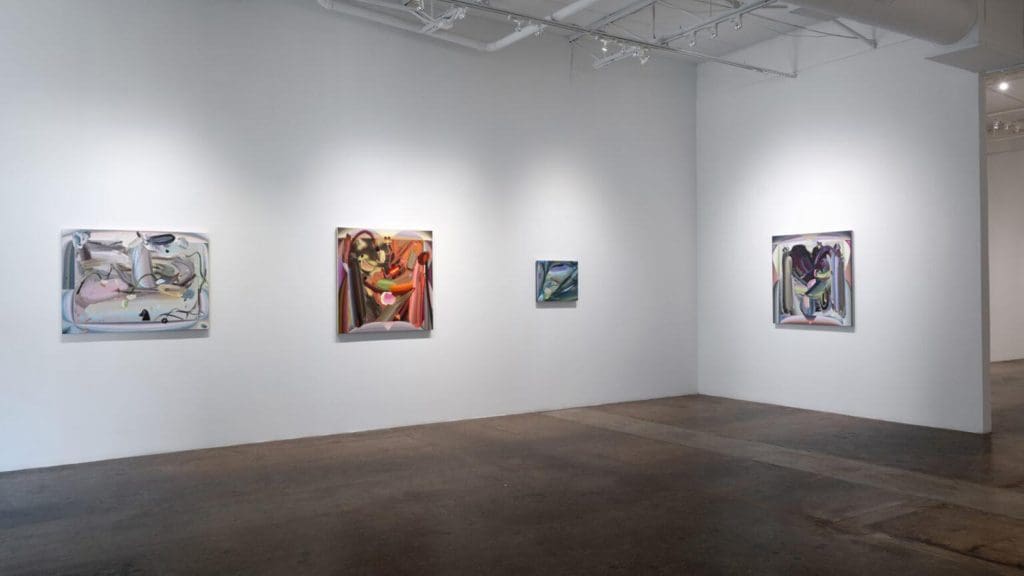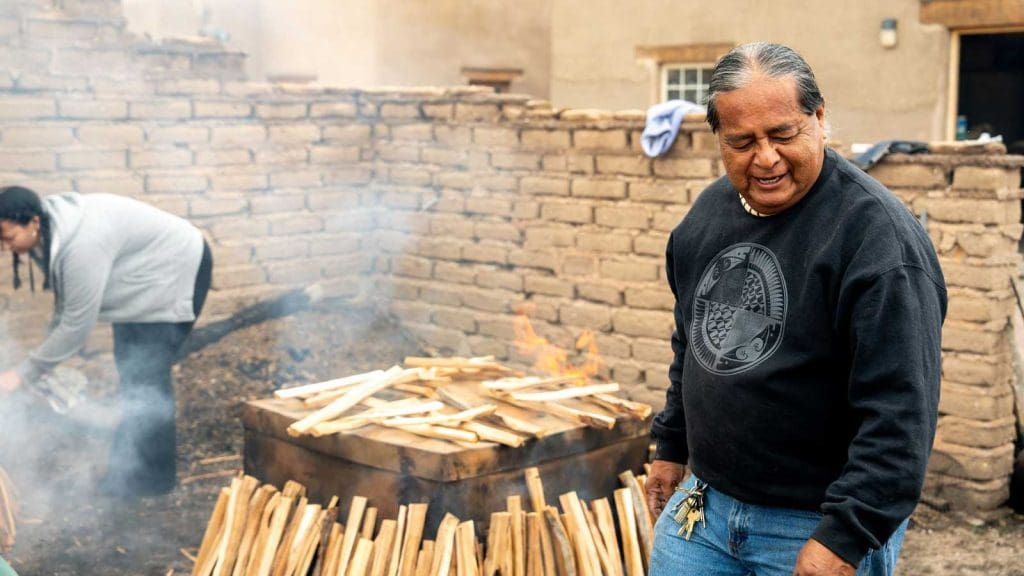She is the granddaughter of Jim Kraft, who received his M.F.A. in Photography and Art History and was assistant professor in the UNM Department of Art and Art History from 1977 until his retirement in 1996. He died in 2007.
“I’m really lucky to come from an artistic family,” Kraft said. “My dad’s side is full of artists and art historians, who have always been by my side and encouraged me. They give the best critiques. My grandpa Jim Kraft taught screen-printing and photography at UNM until the nineties. My grandmother was very artistic too. I look to her for the earliest encouragement I felt. She would treat every drawing I made when I was small as a real art piece. I found her work only later in life; she told me she always had a passion for painting but felt too limited in life to pursue it. She’s also someone I want to honor by continuing my practice.”
Kraft came to UNM from Nebraska but considers both Omaha and Albuquerque home because of her family’s ties to New Mexico. She incorporates her family into her art occasionally. The recent winner of the Reggie Behl Drawing Award, Kraft submitted drawings of the family dog and her younger sister when she applied for the award.
The Reggie Behl Drawing Award is given in honor of artist, educator, and world traveler, Regina “Reggie” Behl, who taught drawing at UNM and all over the world. The award supports an undergraduate student who excels in drawing.
“My family inspires me, I’m continually inspired by my grandpa’s work, and that of my grandma. I want to make them proud. I’m really interested in exploring questions that I have about people and why they operate the way they do, whether socially or in isolation, wondering why someone might react a certain way in a certain situation often informs the imagery I use in my paintings. I’ve always taken inspiration from allegorical art and symbolism. I love the symbolist and decadent movement and I love ‘classically idealized’ figuration. I love when an artist can give a subject an intense emotional gravity and what that might mean for the message of the piece.”
Kraft primarily uses graphite to draw but drawing is not her main method of creating art.
“It’s one of my favorites. I would consider my focal media to be drawing, painting, and some disciplines of printmaking. As I’ve grown and practiced new media, I’ve developed a kind of philosophy around art-making: firstly, that the piece will always dictate what I’ll end up using, and secondly, each new medium has the potential to open a lot of possibilities for translating images. I really enjoy exploring the depth of possibilities each new medium offers.”
She enjoys expanding her “little library of media” and using each one as needed.
“Recently I was working on a project that required a moving, sculptural element, so it’s been really lovely experimenting with a more functional, tactile, 3D space. I’m not sure I can pick a favorite medium, but personally I’ll always pick oils over acrylic.”
Kraft’s thesis show In the Space Between Breath will be in the John Sommers Gallery at UNM in November.
“I started with the title and kept it because the phrase got stuck in my head. Loosely, I started thinking about what any given human is ‘in stasis’. When removed from our environment, how and why are we who we are? I couldn’t explore this question without considering the time we live in, and that led me to interviewing my peers about existence in this current pool of negative messaging around environmental, ecological, and political turmoil, among other issues. I’m interested in people’s reactions, non-reactions, coping mechanisms, and values taken on in a social climate that feels like it’s against us. Those interviews inform what I’m working on.”
The interviews are the bulk of her research going into the graduation project.
“I wouldn’t be able to articulate the thoughts and concerns of others through my own conjecture, so I think the interviews have been really informative for me. I’m still finding a need to explore what precipitated the overall sense that the world is not engineered in favor of everyday life. In 2022, the American Psychological Association published a study on stress in America which examined why and how people are feeling the way they do, specifically citing certain declines in the social system. I’m also looking at the way that overall societal discomfort is related to personal stress, depression, and anxiety. Research for art differs from a more standard research process in that it’s acceptable to be much more intuitively led. I think the reason I want to collect this information in the first place is because I feel it’s necessary to refer to objective truths about our culture while I’m able to articulate my own representation of them in images.”
Of her UNM experience, Kraft noted: “By maybe the second half of my sophomore year, I came around to the idea that no one is doing my degree for me, and my experience will only ever be what I make it. I have had a really great time getting to know my professors and I’m really grateful to have landed in a spot where people are so willing to share their time and knowledge and patience with me.”
As Kraft passes through the UNM campus her family is never far away.
“My grandfather passed away when I was young, but every time I go into the art building, I take a second to say ‘Hi’ and check in, kinda hoping for a better chance of having a good art day.”





